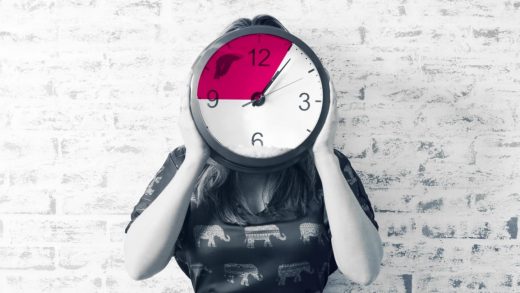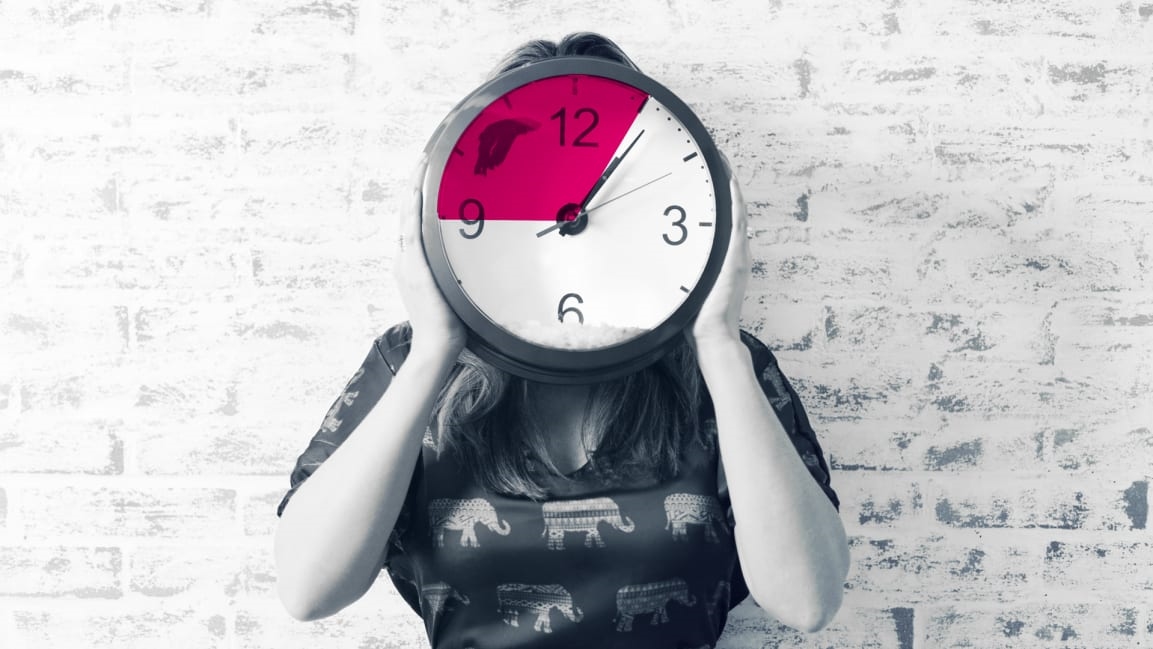This is why we need to ditch the 8-hour workday for good
With the world adjusting to post-pandemic life, everyone’s talking about the “new normal.” But what does that mean when it comes to how we work?
Yet once we get over the practical hurdles of the “new normal” there’s a deeper question to answer: How should the typical workday look when there’s no need for commutes, 9-to-5 schedules, and open-plan offices?
After looking through data, trends, and surveys from around the world (both before and during the pandemic), one thing became clear: The “new normal” workday should be much shorter.
Why the eight-hour workday shouldn’t be a part of the new normal
Before the pandemic, your life most likely revolved around an eight-hour (or more) workday. But in the new normal, that eight-hour structure should be the first thing to go.
As Deep Work author Cal Newport writes:
“Three to four hours of continuous, undisturbed deep work each day is all it takes to see a transformational change in our productivity and our lives.”
Here’s why:
1. Almost no one is “working” for eight hours a day.
Let’s start with some hard data. It doesn’t matter how long you spend in the office, chances are you aren’t working productively for eight hours a day.
Instead, data and surveys from around the world have found that modern workers are only truly productive for a maximum of 2 hours and 50 minutes a day.
But what about the other five-plus hours? They’re spent on nonwork activities like reading the news or social media, socializing with coworkers, taking breaks, or lost to multitasking, context switching, and endless meetings.
2. Quality of work (and happiness) drops sharply after a certain number of hours.
Even if you try to work more to make up for those lost hours, your productivity will hit a wall.
According to research from Stanford University, output and creativity sharply decline after 50 hours of working in a week. And it only gets worse the more you work. In fact, people who work a 70-hour workweek are likely to produce nothing during those 15-20 extra hours.
3. Our focus is limited to blocks of 20-90 minutes max.
The problem with long workdays isn’t just that we’re spending too long at work. It’s that we’re trying to spend all that time productively.
The human brain is more like a muscle than a computer. You can’t load it up with tasks without giving it breaks and proper time to recover. As research scientist Andrew Smart explains:
“The idea that you can indefinitely stretch out your deep focus and productivity time to these arbitrary limits is really wrong. It’s self-defeating.”
Instead, research shows that attention spans begin to decay significantly after 20 minutes while most people require a break every 50-90 minutes. (If you want to get technical, our brains go through something called ultradian rhythms every 90 minutes after which we need to take a break.)
4. Working fewer hours is linked to higher output, creativity, and even health.
Even better, working fewer hours—whether it’s a four-day workweek or shorter days—has been shown to increase productivity, inspire creative ideas, and keep teams happier and healthier.
How to build a four-hour new-normal workday (and still get tasks done)
So how do you create a shorter new-normal workday schedule that actually works? Unfortunately, creating a new schedule isn’t as simple as just saying you’ll work fewer hours. There are forces at play—both internal and external—that will make it incredibly hard to stick to your new normal, even if you know it’s better for your health, productivity, and creativity.
Here’s the step-by-step process we use at RescueTime to help teams and individuals take back control of their day.
Start by understanding your productivity baseline (i.e., know what a “good day” looks like). What gets measured gets improved: If you want to save money, you track your spending. If you want shorter, more efficient workdays, you need to track your time.
Time tracking is a great tool for understanding where your time is going, uncovering distractions, and building a better schedule. But more important, tracking your time helps you understand what a good day actually looks like for you.
If you’d rather go the manual route, you can track your time using a pen and paper. Just set a timer and write down what you’re working on in 10- or 15-minute increments.
After a week of data collection, you’ll be able to understand what your baseline productivity looks like.
How to find your productivity data in the new normal
The main RescueTime dashboard shows you some high-level stats about how you worked over the past week. But to get the data you need to build a more efficient schedule, you’ll need to dig deeper into a few specific reports:
Rewire your brain for focus
For most people, seeing their personal data is a light bulb moment. Even if you’re working eight-plus hours a day, you’re probably lucky to get two-plus hours of time for your most important work.
But this is good news. As Alex Pang, author of Rest: Why You Get More Done When You Work Less, told us:
The key difference is in your ability to focus. Single-tasking and focusing for long periods of time are superpowers. In fact, some researchers say that a highly focused hour is up to 500% more productive than one where you bounce between tasks, emails, and calls.
Your new-normal schedule should be built around optimizing for focus at all costs. This will take some work. But to rebuild your focus you need to do two things. First, set aside time for focused work and stick to it.
This means blocking distracting websites that tempt you (FocusTime is a great tool for this) and keeping your email/chat/phone on DND mode.
Next, you need to physically rewire your brain for focus. Constant interruption is part of the old normal. To undo its detrimental effects, you need to retrain your brain to focus for longer periods.
Luckily, there are some simple and even enjoyable ways to do this. As journalist Amanda Ruggeri wrote in a piece about “active rest”:
“When both adults and children were sent outdoors, without their devices, for four days, their performance on a task that measured both creativity and problem-solving improved by 50 percent. Even taking just one walk, preferably outside, has been proven to significantly increase creativity.”
Take a long, hard look at your priorities
When we interviewed 850-plus knowledge workers, we found that people who work eight-plus hours a day are three times as likely to say they have “too much work” than those who work five hours or fewer.
The best way to clear up your priorities is to talk to your manager or team. Be open about what’s on your plate and ask for advice. If that doesn’t help, we’ve put together this in-depth guide on nine strategies to help you prioritize your day.
Schedule your day around your peak productive hours
With your priorities straight, hard data on when you work best, and a commitment to focus, it’s time to build your shorter, new-normal schedule. But just as important as how much you work is when you work.
We all go through highs and lows of energy throughout the day. And it’s much easier to focus and be productive when you schedule important work during your peak hours.
The easiest way to do this is to look at your RescueTime Productivity by Time of Day report and block out at least two hours when you’re naturally more productive. Working like this, it’s not unrealistic to get more done in two hours than most people do in a day.
Set limits on your communication time
Communication is key to a healthy workplace. But the always-on nature of chat, video calls, and email means work never ends. To keep up with your new schedule, set limits on your communication time, or make yourself available only during specific times of the day.
Embrace active rest
Working four hours a day isn’t an excuse for not taking breaks. Our brains need downtime during the day to recover and refocus. However, we also need downtime outside of work to be at our best. Your overall well-being, creativity, and even productivity depend on a healthy default-mode network. This is the part of the brain that activates when you’re “doing nothing.”
A large part of a healthy new-normal work schedule is giving yourself permission to not work. If you find this hard to maintain, try scheduling your hobbies and downtime.
Talk about your new normal with the rest of your team
It doesn’t matter how much you plan to change your workday if you’re not in sync with the rest of your team.
The only way a shorter day works is if you’re all on the same page about focused time, communication, and priorities. Otherwise, it’s too easy to slip back into old habits and work all the time.
Why choose a new normal with the mistakes of the past?
Nearly 90 years ago, philosopher Bertrand Russell wrote in Harper’s Magazine on the importance of idleness and not chasing endless productivity:
We’re all too busy for our own good. And perhaps one of the few silver linings to come out of our current situation is a deeper questioning of what makes a good day.
I don’t know about you, but if I’m building a new normal, I want it to be productive, purposeful, and playful.
A version of this article originally appeared on RescueTime and is reprinted with permission.
(113)



